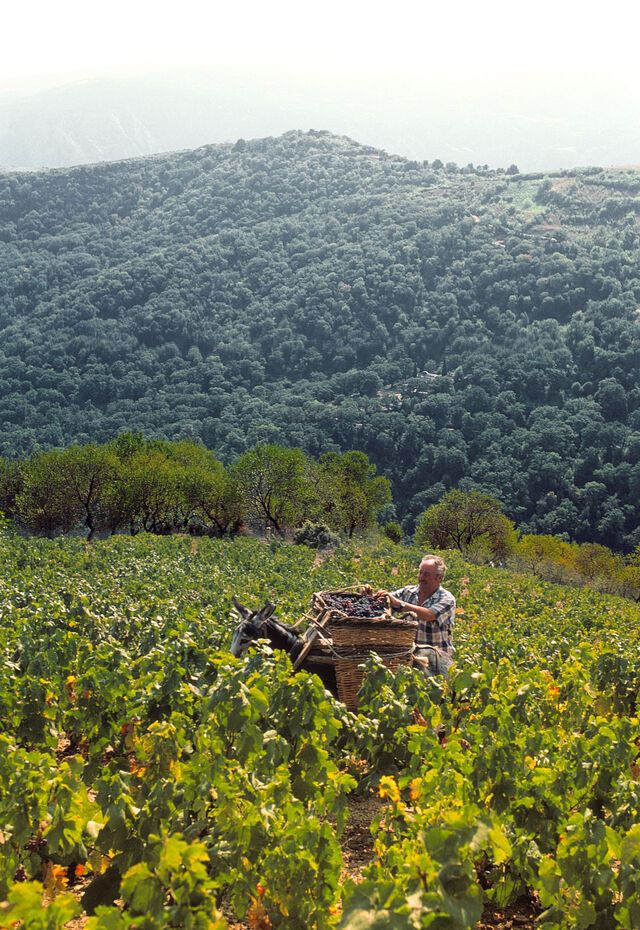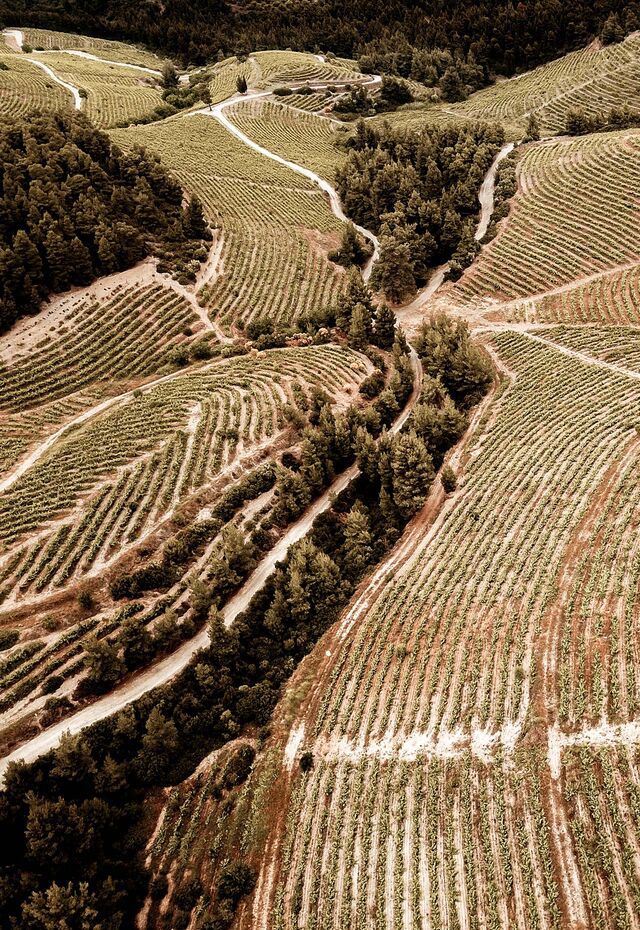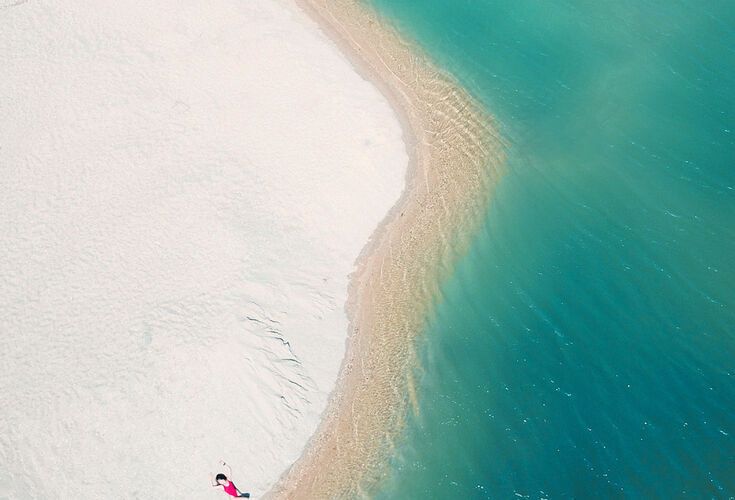Exploring the wine routes of Halkidiki


OVERVIEW
A wine tasting tour of Halkidiki
Lovers of wine and beautiful landscapes, you’re in for a treat. A three-pronged peninsula in northern Greece, Halkidiki is famous for its rich nature and eye-candy coastline. Less well known is that the region is home to vineyards that will change the way you see Greece and its wines.
Setting out from Thessaloniki, you venture towards Kassandra (the first finger of the peninsula) where the vineyards of Agios Pavlos sprawl down hillsides by the coast. In the summer, they benefit from cooling summer sea breezes and, in the winter, protection from extreme weather. And in Sithonia (the second finger), the verdant slopes of Mount Meliton house vineyards nurturing no fewer than 24 grape varieties.
In central Halkidiki, the vineyards of the wineries of Arnea (on the slopes of Mount Holomontas) produce bright, fruity whites and deep-coloured reds, and towns like Marathousa, Megali Panagia and Ierissos near Ouranoupoli vines have been grown since antiquity.
Finally, the all-male Mount Athos peninsula features the monasteries of Greece’s ‘Holy Mountain’, with vineyards from which monks have been making wine for more than 1,000 years.
Modern winemaking rooted in tradition
The union of Winemakers of Northern Greece has created the Wine Route of Halkidiki, including wine tasting and vineyard tours at organic wineries.
You’ll witness the modern winemaking facilities and meet the personalities gaining international recognition. Wines from the Meliton Slopes in Sithonia have been awarded Protected Destination of Origin (PDO) status, while all wines from Halkidiki and Mount Athos have Protected Geographical Indication (PGI).
In addition to vineyard and cellar tours, you’ll enjoy wine tasting paired with some of Halkidiki’s most celebrated local products and be introduced to local grape varieties like Assyrtiko, Malagouzia, Roditis, Xinomavro, Agiorgitiko, Muscat of Alexandria and, of course, Limnio, the ancient grape variety mentioned by Aristotle, whose footsteps you can follow by visiting his birthplace, Ancient Stagira, in eastern Halkidiki. International grape varieties cultivated in Halkidiki include Chardonnay, Sauvignon Blanc, Syrah, Merlot, Cabernet Sauvignon, Cabernet Franc, Grenache and Petit Verdot.
The combination of modern winemaking techniques and longstanding traditions adds to the charm. So if you’re a wine lover, there’s no way your holidays in Halkidiki won’t include discovering the region’s unique wines.
* Note: See the Getting Planning section below for a list of recommended wineries that offer wine tasting and vineyard tours (including but not limited to vineyards from the Wine Route of Halkidiki)
DON'T MISS
There are cultural landmarks near all of the wineries of Halkidiki that can easily be added to your holiday itinerary.
Ancient Olynthos
Built on two hills between the Kassandra and Sithonia peninsulas, Ancient Olynthos encapsulates much of the history of Halkidiki. It is named after the son of Strymonas, the King of Thrace, and was originally inhabited by the Bottiaeans in the 7th century BC. After being destroyed by the Persians in 479 BC, it rose to become the capital of the Chalkidian League, which ruled over 32 cities, including Pella, the main Macedonian city. This led to the destruction of Olynthos by King Philip II of Macedon in around 348 BC, after which Olynthos never recovered. Its remains reveal a Hippodamean town planning system and include some of the oldest mosaic floors found in Greece. Most of the artefacts are displayed at the local museum in Olynthos village.
Sani Tower
At the top of the Kassandra peninsula, the Sani Tower has had several names over the years. Originally known as the Tower of Agios Georgios (after a nearby 14th-century monastic settlement), its official name today is the Stavronikita Tower, after the metochi (dependency) of the Stavronikita Monastery of Mount Athos. Historians believe that it was part of a wider acropolis that provided protection from pirate raids, as the whole area was called Pyrgos (or Tower). It is 8m high, but archaeologists believe that an upper floor is missing. It is now used as a backdrop for cultural events.
Archaeological Museum of Polygyros
One of the most important archaeological museums in Halkidiki, with finds from Prehistoric to Roman times found throughout the region. A new permanent exhibition includes exhibits from Olynthos (clay figurines and coins), Kallithea (parts of the roof of the temple of Zeus Ammon), Akanthos (fishing equipment, lamps, jewellery and amphorae) and Stratoni (funerary steles) and much more. You will also learn about the chronology of Halkidiki and the philosopher Aristotle.
Arnea Village
Arnea is one of the most beautiful villages in Halkidiki, built at the foot of Mount Holomontas. Everything about it breathes authenticity… cobblestone streets, Macedonian architecture, local products including honey from bees feeding in the nearby Taxiarchis forest, jams and hilopites (pasta), colourful handwoven textiles and some 30 freshwater springs around the village. It was one of a dozen local Medemohoria (mining villages) granted special privileges by the occupying Ottomans in the 18th century (when it was called Liarigovi) in exchange for a share of their annual silver production. Be sure to visit the chapels of Profitis Elias (with panoramic views) and Agios Stefanos, restored after being burnt down during the destruction of the village by the Ottomans during the 1821 War of Independence.
Ancient Stagira
Founded in the 7th century BC by colonists from the island of Andros, Ancient Stagira (near the town of Olympiada on the east coast of Halkidiki) is best known as the birthplace of Aristotle. An independent and prosperous city up until the Persian Wars in the 5th century BC, it became an ally of the Athenians and Spartans during the Peloponnesian Wars before being occupied by Philip II of Macedon in 349 BC. Philip rebuilt the city when his son, Alexander the Great, was tutored by Aristotle, considered the greatest Greek philosopher of his time. The walls you see today are from the Byzantine period, but remains of an ancient citadel have been found, including houses, an agora and the tower of Ancient Stagira.
Aristotle’s Park
A statue of Aristotle presides over the park dedicated to the great philosopher, around 30 minutes’ drive from Ancient Stagira. The park has an educational as well as recreational character, with a series of interactive instruments demonstrating the physical phenomena that Aristotle referred to as “the Naturals”. Included are a compass (displaying the direction and distance of some of the most famous cities in the world), a telescope (with views of the Gulf of Ierissos and Mount Athos peninsula), a lens (demonstrating the discrete and combined energy of photons of light) and granite sounding bars (representing the ancient pentaphone scale), as well as a prism, optical discs, a water turbine, an inertia sphere, a solar clock, parabolic reflectors and Aristotle’s alarm clock.
The Prosforion Tower
Located next to the Ouranoupolis harbour, the Prosforion Tower (also known as the Ouranoupolis Tower) is the largest and best-preserved tower in Halkidiki. It was built in the 14th century as a metochi (protectorate) by monks from the Vatopedi Monastery of Mount Athos and served as a base for the Prosforio Monastery (a dependency of Vatopedi). It was also known as the Tower of Loch, after an Australian couple who lived in the tower in the 1930s. You can distinguish different architectural influences: A Byzantine phase (11th-12th centuries) and an Ottoman phase (16th century), when three floors were added. The wooden interior dates from the 19th century.
The Zygos Monastery
Also known as the Frangokastro, the Zygos Monastery is one of the best examples of Athonite architecture outside Mount Athos. It was founded in the early 10th century and destroyed in 1198 and its remains (around 2km from the limits of the all-male Mount Athos peninsula) include 11 towers of a five-sided fortification and a large Catholicon (church), indicating that it was one of the most important monasteries of the time. Dedicated to the Prophet Elias), the Catholicon has been partially restored, including frescoes and marble floors.
GET PLANNING
Vineyards offering wine tasting in Halkidiki include (with distances from Thessaloniki Airport):
Moudania (Nea Propontida)
- Tsantali Winery in Agios Pavlos (30km, 25mins): A vineyard with panoramic views and an underground cellar with more than 2,000 barrels.
Sithonia Peninsula
- Domaine Porto Carras, Neos Marmaras (113km, 1hr 40mins): The largest organic vineyard in Greece.
Arnea & Marathousa & Megali Panagia
- Claudia Papayianni Estate in Arnea (65km, 1hr 5mins): Select indigenous and international grape varieties and modern winemaking techniques.
- Livadiotis Estate in Marathousa (58km, 1hr 10mins): Organic cultivation along with the low yield per hectare and modern equipment producing high-quality wines.
- Akrathos Newlands Winery in Megali Panagia: An organic vineyard with indigenous and European grape varieties on the eastern slopes of Mount Holomontas.
- Estate Tarazas in Megali Panagia: Run by third-generation winemakers, a 450m altitude vineyard producing excellent wine in limited quantities.
- Domain Agrovision in Ierissos: A “little Bordeaux” in the words of the French-Greek founders, whose love of Halkidiki and wines led them to establish the winery.
Mt Athos
There are 12 wineries that can be visited in Mount Athos, including:
- Tsantali Vineyard in Metochi Chromitsa (St Panteleimon Monastery) in Mt Athos (160km, 2hr 30min): Preserving traditional Mt Athos winemaking traditions and a sloping hillside view of the sea.
- Mylopotamos Winery: A modern winery and bottling plant built in the traditional Mt Athos architecture in the biggest dependency of the Holy Monastery of Megisti Lavra (Great Lavra). It is said that St Athanasios first planted vines here in the 10th century AD.
- Hilandar Wines: A 170-acre winery within the Chilandariou Monastery, producing 120,000 bottles of wine annually.
- Vineyards offering wine tasting in Halkidiki are open all year round (some upon request, so be sure to call first).
- Spring and autumn are the best seasons to get the most out of your visit.
- In autumn, the wineries of Halkidiki are in full production mode, with staff tending the vines and the grape harvest in progress. You might even be lucky enough to witness grape treading and bottling.
- In April and May, you’ll find vines coming to life once again, maybe with the first grapes of the year appearing.
- Autumn
- Spring
- Summer
- Winter
- A minimum of 5-7 days is ideal to include a few wineries and cultural highlights on your holiday schedule in Halkidiki, as well as beaches in the summer months.
- 2-5hrs for each winery in Halkidiki, depending on whether you include a vineyard and cellar tour and go wine tasting.
- There are more than 20 traditional tsipouro distilleries in Halkidiki, supplying local shops and tavernas. Visiting a distillery and learning about the tsipouro tradition that stretches back to the 14th century can be done at any time of year.
- There are wine events in Halkidiki throughout the year, including:
- The annual VorOina wine and spirits tasting event in Thessaloniki (and Athens) by the Winemakers of Northern Greece.
- The annual Aniktes Portes (Open Doors) event where members of the Winemakers of Northern Greece open their doors to the public for free wine tasting and winery tours.

